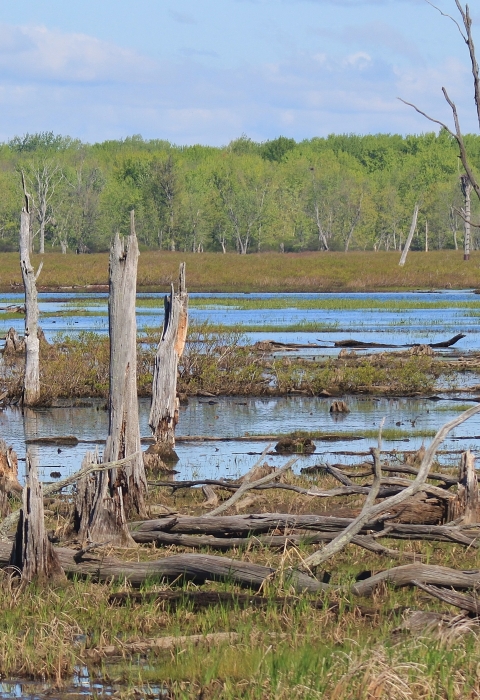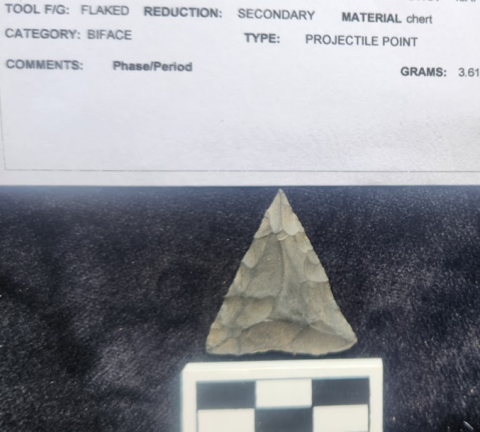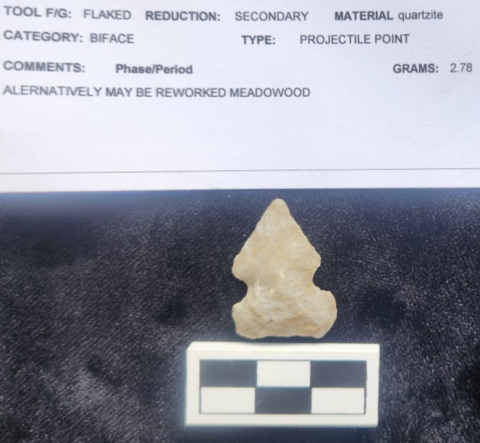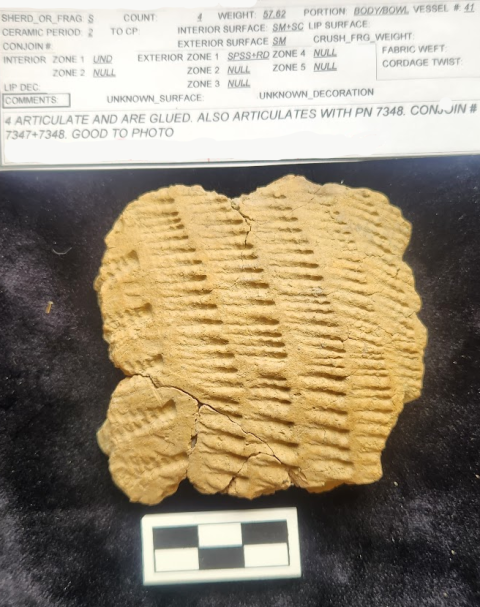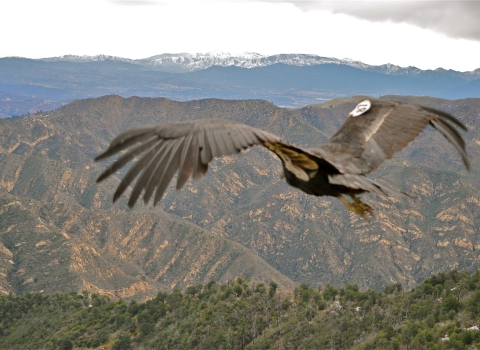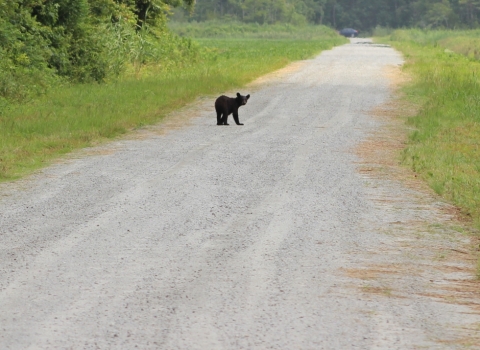People usually visit a museum to see the collections, but Ken Sturm, manager of Missisquoi National Wildlife Refuge, saw an opportunity — the chance to connect local residents with the area’s Indigenous heritage.
In 2022, Sturm was visiting a summertime farmers market near the refuge when he chanced a visit to the Saint Albans Museum. The museum had reorganized its interpretation materials, and he noticed the Indigenous artifacts on display. A past excavation at the refuge had uncovered artifacts traced back to the Abenaki of many centuries ago, and he realized they’d make a great addition to the museum’s displays. He contacted museum staff and began working to incorporate some of the Service’s artifacts into the museum’s exhibits.
Sturm worked with Amy Wood, our Northeast regional historic preservation officer, to facilitate the loan. The excavated artifacts were in storage at the nearby Vermont Archaeology Heritage Center. With the help of Vermont State Archaeologist Jess Robinson, Ph.D., local members of the Abenaki Nation selected the artifacts that best displayed their history. It was an emotional experience, as they examined items that provided tangible connection to their ancestors.
The archaeological history of the refuge first hit home for Sturm in 2013, when he learned that an archeological investigation revealed that an Abenaki longhouse had been present on the refuge.
“The refuge and its surrounding area are well-documented as a home site for Native peoples,” said Sturm. “I am hoping this partnership between the museum and the refuge can provide more information to the community about the significance of the Missisquoi Delta’s Indigenous history.”
The Abenaki have stewarded this land since time immemorial. Sturm remarked that the refuge was established 80 years ago for the same reason: “It is an amazing biological resource.”
Archaeological excavations at the refuge are not done often and are typically compliance-driven — the National Historic Preservation Act mandates that federal agencies evaluate the impacts construction may have on archaeological resources before a development project takes place. A 10-year road-widening project led to the excavations that revealed the Abenaki artifacts now on display.
Lending artifacts is a common practice for the Service, according to Wood. “This loan is significant for the area. The entire refuge is archeologically significant while the museum is in a very rural area, so this project will provide a great opportunity to educate the community on those who came before us,” she said.
The Saint Albans Museum is always free to visitors when it is open from May to October. Once the artifacts are on display, Robinson will work on interpreting them, noting their cultural significance and age. The exhibit is expected to open to the public once the museum reopens in May 2024.
When visitors come to the museum to see the Abenaki artifacts, they will see not just the items but the Indigenous history behind them.
